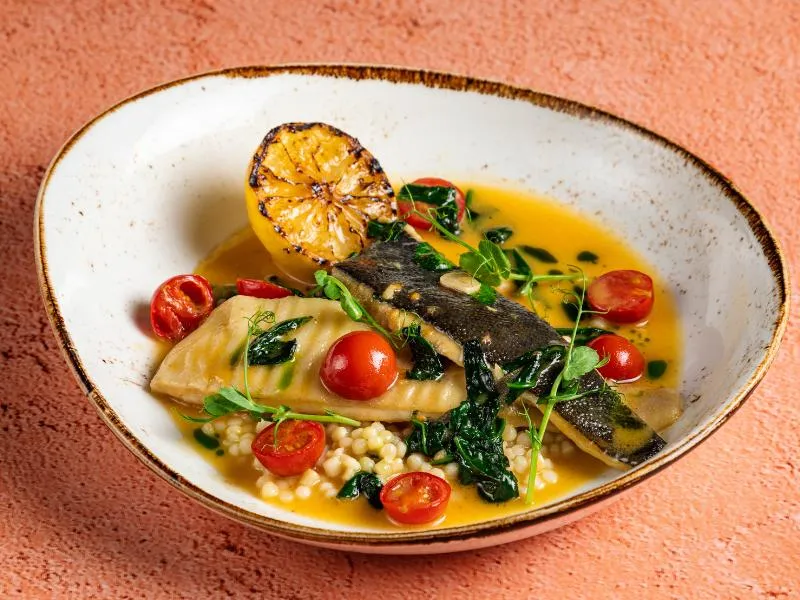Acqua Pazza
Fresh white fish poached in a fragrant broth of tomatoes, herbs, and white wine.
👉 View Authentic Recipe 👈
About This Dish
Acqua Pazza, meaning “crazy water” in Italian, originated among the fishermen of the Campania region, particularly along the Amalfi Coast and Neapolitan areas. Legend has it that fishermen would prepare their freshly caught fish onboard their boats in seawater (the “crazy water”), enhanced with tomatoes, olive oil, and herbs they had brought from home.
The dish exemplifies the Mediterranean approach to seafood: minimal intervention to highlight the fish’s natural flavors. Traditional preparations call for local white fish like branzino, orata (sea bream), or merluzzo (cod), poached gently in the aromatic broth of tomatoes, white wine, garlic, and fresh herbs. The resulting light but flavorful broth is considered as important as the fish itself.
Acqua Pazza represents the simplicity and resourcefulness of coastal Italian cuisine, where freshness of ingredients trumps complexity of technique. It’s traditionally served as a second course (secondo piatto) in Italian meals, often accompanied by crusty bread to soak up the prized broth, especially during warm weather when lighter dishes are preferred.
🧑🍳 Analyzed by CucinaBot
Why This Dish Works
The gentle poaching method preserves the delicate texture of white fish while allowing it to absorb the aromatic compounds from the herbs and tomatoes. The acidity from tomatoes and wine helps break down the fish proteins slightly, creating tenderness without toughening the flesh. The olive oil emulsifies with the broth to create a silky mouthfeel that carries flavor efficiently across the palate.
Key Success Factors
- Fish Freshness: The dish relies heavily on fresh, high-quality fish with firm white flesh
- Gentle Poaching: Maintain a bare simmer (around 180°F/82°C) - never allow the liquid to boil vigorously
- Proper Broth Ratio: Use just enough liquid to partially submerge the fish, allowing steam to cook the exposed portion
- Resting Period: Allow the fish to rest in the hot broth for 2-3 minutes after removing from heat to complete cooking gently
Common Pitfalls
Many non-authentic recipes overcomplicate this dish by adding too many ingredients like capers, olives, or excessive herbs that mask the delicate flavor of the fish. Another common mistake is overcooking the fish by excessive simmering time or using too high heat, which results in dry, tough fish that separates from its skin and falls apart.
How to Judge Authenticity
When reviewing recipes, look for these markers of authenticity:
- Uses whole fish with bones and skin intact (or large fillets with skin)
- Contains minimal ingredients (tomatoes, garlic, parsley, white wine, olive oil)
- Emphasizes the importance of the cooking liquid as part of the dish, not just a means to cook the fish
- Specifies gentle poaching rather than aggressive simmering
- Includes serving with the cooking broth and crusty bread